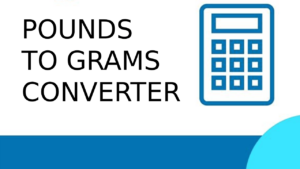To convert a decimal number to its hexadecimal equivalent, the number must be first divided by 16.
This division must be done as an integer division, which means that the remainder is discarded and only the whole number result of the division is kept.
The hex value for the decimal number is then determined by the sequence of remainders from the last division to the first.
| Decimal | Hexadecimal |
|---|---|
| 1 | 0x1 |
| 2 | 0x2 |
| 3 | 0x3 |
| 4 | 0x4 |
| 5 | 0x5 |
| 6 | 0x6 |
| 7 | 0x7 |
| 8 | 0x8 |
| 9 | 0x9 |
| 10 | 0xa |
| 11 | 0xb |
| 12 | 0xc |
| 13 | 0xd |
| 14 | 0xe |
| 15 | 0xf |
| 16 | 0x10 |
| 17 | 0x11 |
| 18 | 0x12 |
| 19 | 0x13 |
| 20 | 0x14 |
| 21 | 0x15 |
| 22 | 0x16 |
| 23 | 0x17 |
| 24 | 0x18 |
| 25 | 0x19 |
| 26 | 0x1a |
| 27 | 0x1b |
| 28 | 0x1c |
| 29 | 0x1d |
| 30 | 0x1e |
| 31 | 0x1f |
| 32 | 0x20 |
| 33 | 0x21 |
| 34 | 0x22 |
| 35 | 0x23 |
| 36 | 0x24 |
| 37 | 0x25 |
| 38 | 0x26 |
| 39 | 0x27 |
| 40 | 0x28 |
| 41 | 0x29 |
| 42 | 0x2a |
| 43 | 0x2b |
| 44 | 0x2c |
| 45 | 0x2d |
| 46 | 0x2e |
| 47 | 0x2f |
| 48 | 0x30 |
| 49 | 0x31 |
| 50 | 0x32 |
What is the formula to convert decimal to hexadecimal?
The formula to convert decimal to hexadecimal is as follows:
We divide the decimal number by 16 because 16 is a base value of hexadecimal numbers. By doing so, we can obtain the remainder and quotient.
The remainder will be the last digit of our hexadecimal number while the quotient will be used to determine the next digit until there are no more digits left.
Can you have decimals in hexadecimal?
Hexadecimal is a base 16 number, which means it uses 16 different digits – 0 to 9, and then the letters A to F. This can be helpful because it means that rather than having to remember a long list of decimal numbers (from 0 to 255), you only need to know 16.
The downside is that each digit in hexadecimal represents 4 bits (or 1/16th) of information. Decimals use a positional notation where each position has a value 10 times greater than the position to its right.
In binary, we use powers of 2 instead of 10, so each position has a value double the previous one: 2^0 = 1 (decimal 1), 2^1 = 2 (decimal 2), 2^2 = 4 (decimal 4), and so on. So in binary, the number 1101 would be 1 * 2^3 + 1 * 2^2 + 0 * 2^1 + 1 * 2^0, or 13 in decimal.
Hexadecimal also uses a positional notation, but because there are 16 digits available, each position has a value 16 times greater than the position to its right: 16^0 = 1 (decimal 1), 16^1 = 16 (decimal 16), 16^2 = 256 (decimal 256), and so on.
Some people like to think of the hexadecimal positions as starting at the “bottom” with 0x0 and going up: 0x0, 0x1, 0x2, … , 0xE, 0xF; others like to start at the “top” with 0xF and count down: 0xF, 0xE, 0xD…., 0x1, 0x0. You will see both conventions used.
So the number 3E8 in hexadecimal would be 3 * 16^2 + 14 * 16^1 + 8 * 16^0, or 1000 in decimal.
How do you convert 9 decimal to hexadecimal?
To convert 9 decimal to hexadecimal, divide the decimal number by 16. Treat the division as an integer division. Write down the remainder (in hexadecimal).
Divide the result again by 16. Treat the division as an integer division. Repeat step 2 and 3 until result is 0. The hex value is the digit sequence of the remainders from the last to the first.
Which alphabet is not allowed in hexadecimal number system?
The alphabet that is not allowed in hexadecimal number system is J.
How do you convert a decimal to a decimal in hexadecimal?
To convert a decimal to a hexadecimal, you need to divide the decimal number by 16 and write down the remainder. You will then divide the result again by 16 and continue doing so until the result is 0. The hex value is the digit sequence of the remainders from the last to first.
What is the process of converting from hexadecimal to decimal?
The process of converting from hexadecimal to decimal is done by using the base number 16. The hexadecimal digit is expanded to multiply each digit with the power of 16. The power starts at 0 from the right moving forward towards the right with the increase in power. For the conversion to complete, the multiplied numbers are added.






